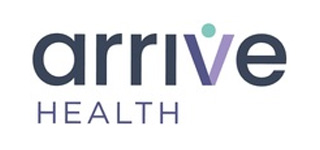Leaders from two healthcare provider organizations share how they achieved clinician buy-in and leveraged it to drive AI adoption for OR scheduling and hospital operations improvement.
Clinician buy-in is critical for large-scale improvement and innovation projects within a health system, including those requiring artificial intelligence (AI) and machine learning (ML) adoption. However, issues such as burnout and skepticism of new technology can make getting physician buy-in a challenge.
Health systems have previously reported that AI-backed clinical intelligence and automation can help enhance perioperative care and close care gaps. Stakeholders across the healthcare industry are looking for ways to leverage these technologies for capacity and workflow optimization.
Community Health Network and Baylor Scott & White Health are two such organizations. In an email interview with HealthITAnalytics, Patrick McGill, MD, executive vice president, and chief transformation officer at Community Health Network (CHN), and Jon Bodnar, lead product manager at Baylor Scott & White Health’s (BSWH) Digital Health Office, shared insights into how achieving clinician buy-in can advance AI-backed efforts to improve operating room (OR) scheduling and hospital operations.
THE NEED FOR AI-BASED CAPACITY OPTIMIZATION
Efficient capacity management and optimization is a major strategic goal for many health systems, but finding an appropriate approach to meet this goal can be difficult. At CHN, McGill noted that the variation in health system operations presents particular challenges in capacity management.
“As we’re built of many different practices and organizations that came together in the past 30 years, physicians and schedulers also brought their own individual approaches. This is definitely a strength, but has also resulted in some inefficiencies, including in scheduling OR blocks,” McGill explained.
Specifically, variations in surgeons’ scheduling preferences or patterns of OR usage can lead to inefficiencies such as unused OR scheduling blocks, surgeons being unable to get OR block time, and ORs and surgical equipment sitting idle, he continued.
Bodnar echoed this sentiment, adding that nursing and anesthesia staffing restrictions over the past few years have also impacted capacity at BSWH. He highlighted the importance of OR schedulers and their processes, adding that while BSWH has worked to standardize OR scheduling processes using Epic, the processes still rely heavily on the manual effort of schedulers.
“Surgeon satisfaction with scheduling at BSWH is tied very tightly to the BSWH schedulers’ customer service mindset. Coming out of the pandemic, everything is running very lean, and there has been a lot of staff turnover. These schedulers are often answering phone calls all day, managing day-of scheduling coordination, building reports, and other duties,” Bodnar said.
CHN and BSWH are not the only health systems facing OR scheduling-related capacity management issues. A literature review published earlier this year indicated that OR scheduling remains a problem across the industry because of its complexity. It also shows that the number of OR scheduling articles published per year is on the rise.
Various models for OR scheduling optimization have been proposed in recent years, including AI- and algorithm-based models. CHN and BSWH have turned to a similar strategy, using a cloud-based capacity management platform from LeanTaaS for their OR scheduling optimization efforts.
GAINING BUY-IN FROM THE TOP DOWN
Finding a capacity management platform for OR scheduling may get health systems closer to addressing OR scheduling and hospital operations issues, but gaining clinician buy-in is necessary to continue moving forward.
Bodnar stated that starting with leadership buy-in is crucial to the successful deployment of any solution for hospital operations improvement, including OR scheduling. He noted that BSWH’s network is diverse, comprised of large and small facilities, many of which are community-based or independent practices. This diversity presents unique buy-in challenges.
“While every facility is unique, it can take quite a bit of education to get them to understand how what we’ve done elsewhere can transfer to them. I work very closely with our system CMO and other perioperative leadership to spread the word internally. Having support from the top has opened a lot of doors as we look to expand to additional facilities,” Bodnar explained.
This focus on education is shared by CHN, where part of educating staff on how a capacity management solution can benefit them is showcasing its potential to enable them to work at the top of their licenses and improve care, McGill noted.
“At CHN, we have a culture of continuous improvement, where we value our clinicians and employees as partners,” he said. “We leveraged this when seeking physician buy-in, showing physicians how they benefit directly from the solutions and how using the new solutions is a win for them. Our surgeons, surgical nurses, and supporting teams are high performers who want to safely perform as many cases as possible and who also want to work at the top of their license. So, we were seeking ways to do more within our existing framework, and it was critical that we recognized what these physicians wanted and how inefficient scheduling processes prevented them from doing this.”
REDUCING IMPLEMENTATION PAIN POINTS TO BOLSTER BUY-IN
While highlighting how inefficiencies in OR scheduling can harm clinician workflows and performance goes a long way to achieving widespread buy-in, there are pain points in the process of deploying a cloud- or AI-based solution for capacity optimization that can impact buy-in.
“There is a fear of change, specifically for the office staff, many of whom aren’t very tech-savvy,” Bodnar noted. “They’ve used the phone and fax for a long time, and while inefficient, they are comfortable with the current process. Thankfully, LeanTaaS owns and manages much of the workload to train them. We have focused heavily, as the system, to supplement their support staff, ensure that the offices feel well taken care of, and understand that we are doing this to help them.”
Clinicians at CHN shared similar pain points, including concerns around administrative tasks and caseloads, when the health system began searching for a capacity optimization solution. Both CHN and BSWH took a steady, collaborative approach to solution implementation to reduce pain points as much as possible. McGill and Bodnar noted that staff feedback and open communication were key throughout the process.
“During implementation, physicians could experience firsthand how the new scheduling solutions addressed [their] problems, relieving them and their staff of time-consuming admin tasks and helping them perform an optimal caseload within the hours they worked best,” McGill said. “Physicians could also see from the analytics how their own metrics improved. Providing this direct, concrete feedback early on enables physician buy-in throughout the implementation.”
Since implementing the platform, CHN has seen a 20 percent increase in proactively released OR time, he added. By freeing up this OR time and filling it with cases, the health system has also seen a 3 percent increase in prime time OR utilization. In addition, the tool allows CHN to make informed decisions about OR-related capital expenditures, like the need for additional ORs or tools like surgical robots.
BSWH has also gained valuable insight into the current state of its OR management since implementing the platform, including how the system can set a standardized set of parameters for OR management to ensure it is running as efficiently as possible while still providing each facility within its network the ability to adjust to the nuance of their market, Bodnar shared.
Overall, both McGill and Bodnar indicated that AI- and cloud-based tools for capacity management have significant potential to help optimize hospital operations and workflows, allowing staff to focus on improving patient care.
“AI-based capacity optimization tools remove the ambiguity from the process,” McGill stated. “They provide an up-to-date picture of present circumstances and use historical data to make predictions. These predictions include likely future caseloads and block usage and recommendations on how to optimize the schedule for the time, rooms, and equipment available. This minimizes guesswork and back-and-forth, supporting the efficient building of schedules that fully utilize OR assets.”



